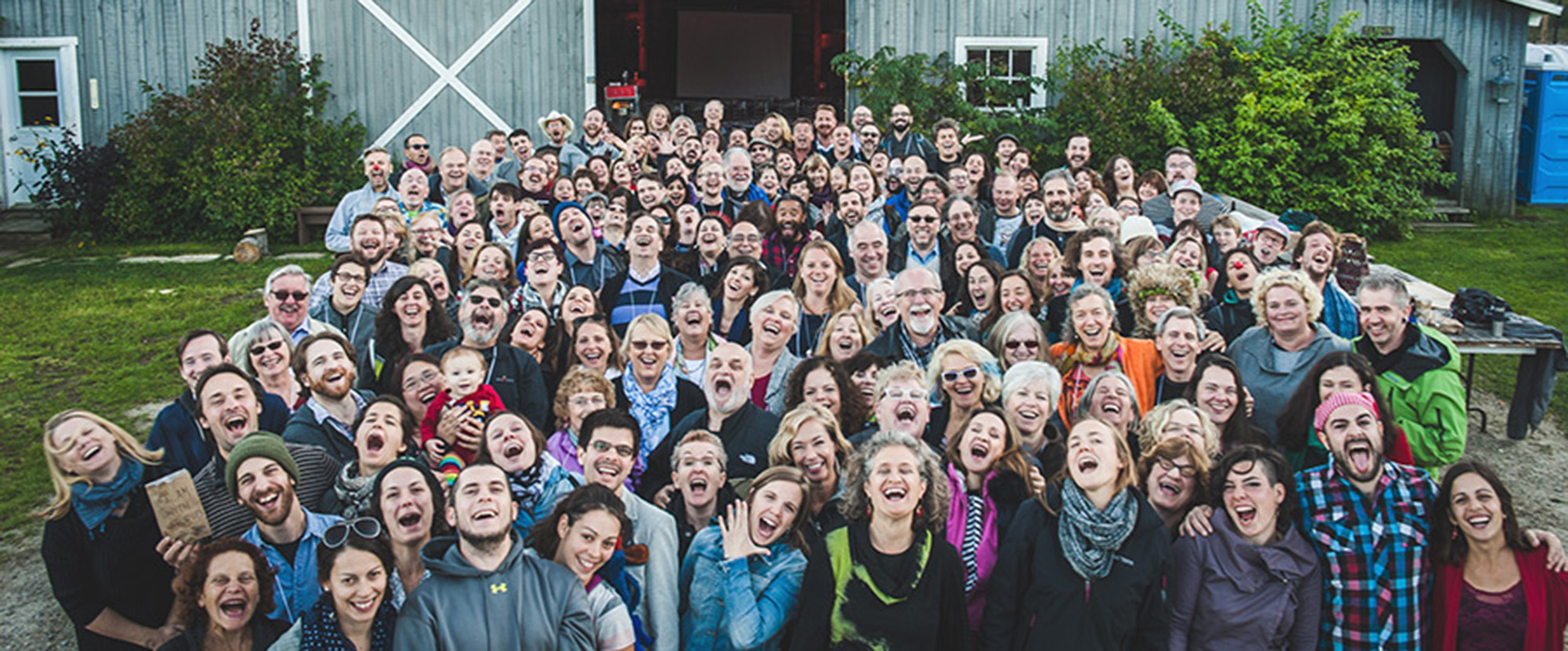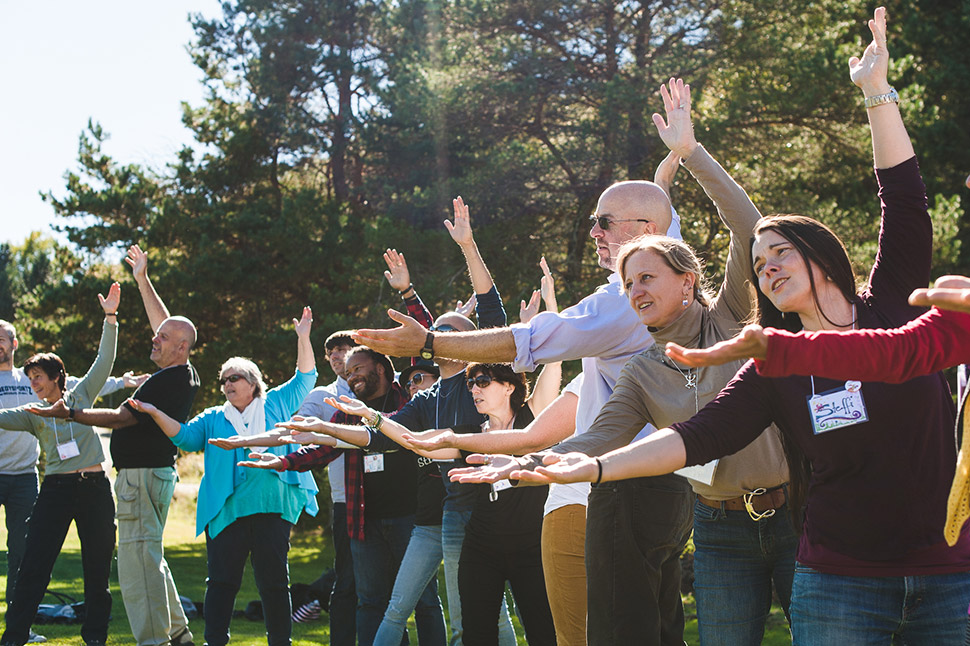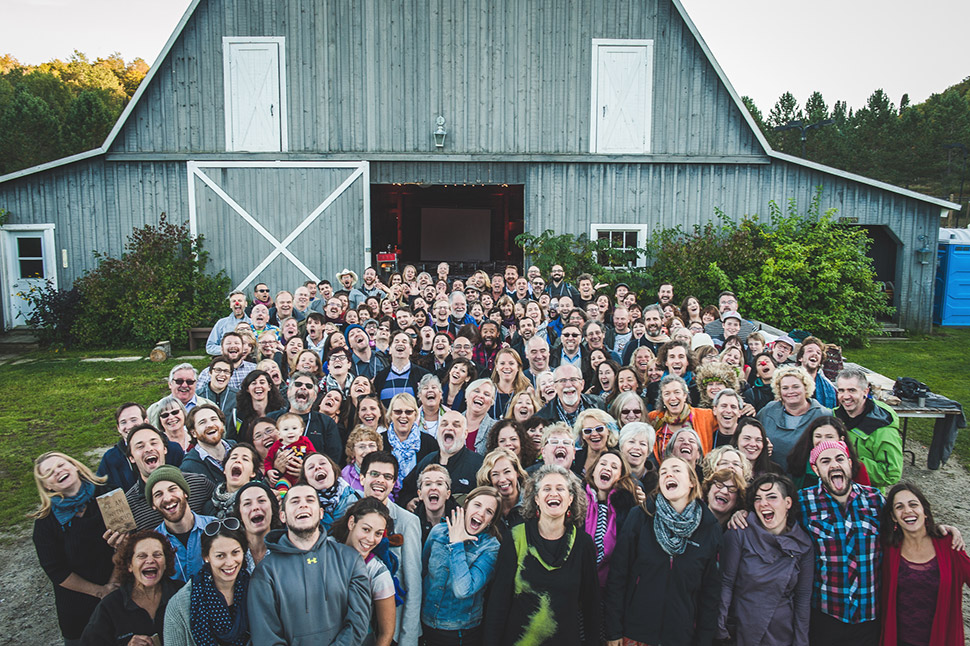Lessons Learned from the AIN World Conference 2015

Last September, I got the pleasure to attend the Applied Improvisation Network World Conference that was set on the beautiful Blueberry Lake just two hours North of Montreal Canada. If you are not familiar with applied improvisation, in short, applied improvisation is the process of taking the core principles and activities found in theatrical improvisation and applying them to other contexts. This conference was attended by people from all over the world in a variety of industries like academics, mental health and business to name a few. Being a lover of improvisation, I was so excited to surround myself with likeminded people that embrace the magic of improv. Below are just a handful of the lessons that I learned that can be applied to the corporate world.
What Are You Curious About?
Before each session, we are asked “What are you curious about?” The reason that they asked that question is because there was something that drew us to that session, and it’s important to know what that is so we that can make sure we get out of the session what we came for. Also, it’s important to do work that you are curious about. Curiosity keeps you interested in learning more and will give you the drive you need to overcome adversity. Remember when we were kids and everything was new? We looked at everything with a fresh perspective. We didn’t have any perceived notions about anything. Now that we are adults, I feel that we have lost that childlike wonder. Breakthroughs in your work happen when you bring back your “child mind”. It will give you the ability to see things from different angles, which will yield different results.

Great Ideas Can Come From Anywhere (or Anyone)
One of the things that I enjoyed most about the event was the space in between sessions. Most conferences that I have attended, I felt like I was rushed from session to session and didn’t get a chance to digest what I just learned and experienced. Then by the time I get back to my hotel, I’m exhausted and have forgotten just about everything that I have learned. I look down at my notebook to find scribbles that make no sense whatsoever. It was different at the AIN conference. There was plenty of time in between each session to network or just spend time alone to recharge. Also, since each of the sessions were spaced out along the resort, the walking time gave me a chance to think and take it all in. That in-between time is where the magic happens. I don’t know if it was the nature, the awesome company, the walking, or all the above, but I came up with more great ideas and concepts that stuck with me long after the conference ended. Far too often in our day-to-day lives, we are rushing from meeting to meeting or from task to task with little or no breaks in between. We eat lunch at our desks and feel guilty when we go home on time. It’s no wonder that more people are reaching burnout than ever before. Our brains are a muscle, and like all muscles, they need rest to grow.
Another great feature of the AIN conference was a concept that they called “Open Space”; during open space anyone can make an offer for a session or activity. The offers consisted of new workshops, extensions of previous topics or fun group activities. Once all the offers were presented, the attendees split up to join the topic that interested them. If no one showed up to a specific session, the person who presented the offer didn’t take it personal. Back in the real world, we often feel like the best ideas only come from the most experienced employees. At your company, are you cultivating an environment where everyone feels like their ideas can be heard? You never know; that next BIG IDEA can come from anyone.
Work On One Thing At A Time
Often times when I go to conferences, I come back with my journal filled with notes, ideas and action items. After the excitement of the conference wears off, I am left overwhelmed and don’t know where to start. At the AIN conference, one of the presenters challenged us to think small. He said instead of taking tons of notes, knowing that you are not going to do anything with it, just take one theme that you find interesting and put it to action right away.
Far too often, we have overflowing to-do lists which cause anxiety, and we end up floundering and doing nothing causing more anxiety. The vicious circle goes on. An alternative approach is single tasking and working on one thing at a time. You will find that if you take this approach, the moment you complete that first task you will have the momentum to work on another.
If you are like me and have a hard time choosing a task, what is a mission critical item that, if you don’t complete it, will result in loss of performance or revenue? That is where you should focus your attention first.
There Are Endless Possibilities
One of the cool things that I love about improvisation is the collaboration. When multiple people come together to create an experience and they bring ideas and insights that are influenced from their perspective, anything can happen. I was having lunch and chatting with some new friends, and we were discussing the various projects we were working on which turned into a mini brainstorm session. Everyone was chipping in ideas and possible solutions, and before we knew it we all had about a dozen different ideas to try.
“When multiple people come together to create an experience and they bring ideas and insights that are influenced from their perspective, anything can happen.”
If you are working on a project and get stuck, don’t be afraid to ask someone for their opinion; you will be surprised with what you get back. In the book The Innovator’s DNA: Mastering the Five Skills of Disruptive Innovators, the author explains that successful innovators will often network with diverse groups of people as a way to expand their horizons and get new perspectives.

Improvisation Leads To Happy Employees and Great Ideas
One of my favorite sessions was the one lead by Andrew Tarvin on the ROI of Improv. In his session, Andrew discussed how you can increase productivity and revenue to your bottom line by introducing improvisation and humor to the workplace. Far too often, when I mention that I’m an improviser and I love helping other companies learn how to play and have more fun, the response I get is “We don’t have time for that,” or “That’s silly.” What is not silly is burnout and decrease in employee retention. According to a study conducted by WorkplaceTrends, 53% of the participants in the study reported that they felt burnt out and overworked. Think of it like this; your brain is a muscle, and in order for muscles to grow they need rest. However, most employees don’t take breaks and are working longer hours. Leading companies like Google and Apple have started instituting fun collaboration breaks consisting of improvisation games to help their employees give their brain a rest.
Improvisation is also great for idea generation. In a 2010 MIT study on idea generation, the researchers concluded that improvisors were more proficient at creating new ideas, and with proper training, individuals can improve their ability to generate creative ideas.
In closing, improvisation is not just for the theatre. If you embrace the principles that allow improvisers to make magic on stage, you open a world of possibilities. In the beginning it may seem silly; but I’m confident the more that you play and experiment, the better your work life will become. If you give any of the tips that I mentioned a shot, please leave a comment and let me know what you think.
Photo Credit: Alex Tran
